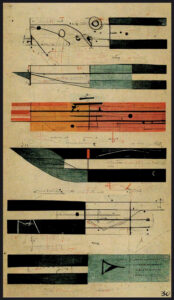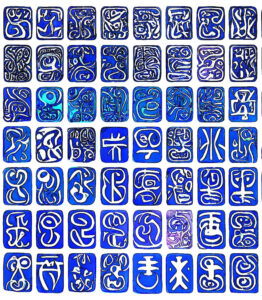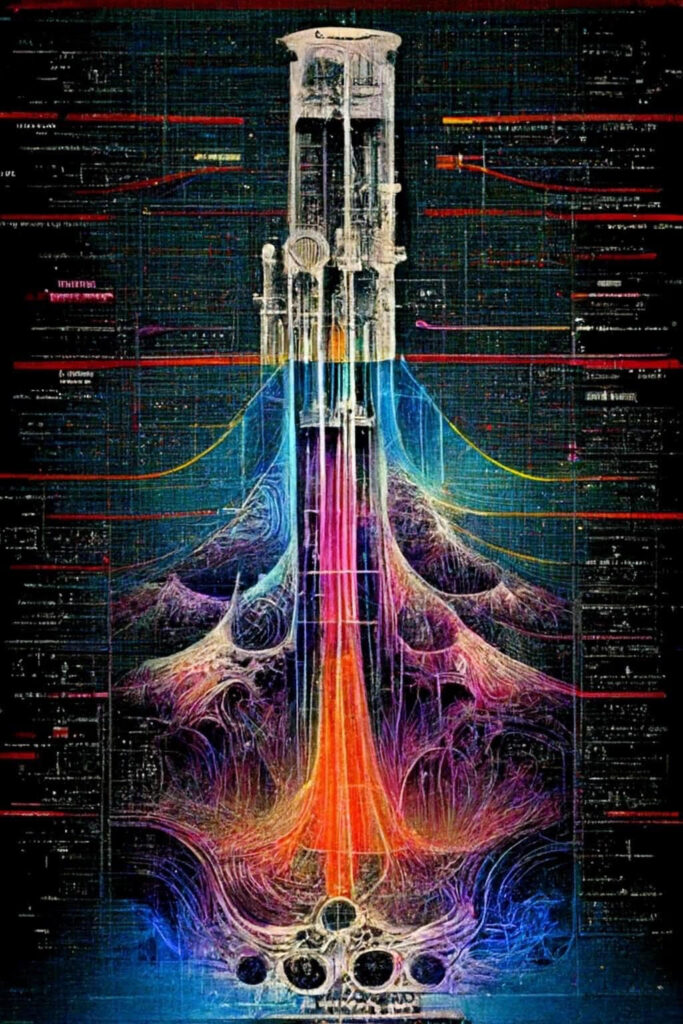The question of authorship is as old as ego. Most folk songs can live for generations quite happily without a named composer and are essentially immortal as long as someone remembers them; but when music doesn’t originate from composers, where does music come from?
Music which does not originate from composers originates from musicians. The resulting performances lean heavily on a generation of talent trained in free improvisation, brought up on interpreting graphic scores and visual notation; a generation highly entangled with their own technologies.
AI software like MidJourney and Wombo are offering artists unprecedented access to hack human creativity with digitized imagination. The work is familiar yet strange, stunningly ordinary, because its source material is the breath of organic expression. In this exhibition we explore scores, instrument design and musical interfaces created using AI software.
Perhaps in the future there will be no more need for composers or musicians, no reason to build instruments or make sounds; perhaps we will all be enjoying our AI generated music-alternative personalized soundtrack. With the question of authorship out of the way we may have room to ponder if, without novel human expression, it is still “art”.

mIEKAL aND lives outside the constraints of academia in the most lush and rural part of the unglaciated Driftless area of southwest Wisconsin. Choosing to focus on creating wilderness and abundance surrounded by the perfect setting for limitless imagination his course of action includes demonstrating alternatives to inbred aesthetics, delighting in the play of DIY culture, and making art and writing that is both anarchic and noisy.
Son of Witz makes comics, paintings, album covers, and now, apparently, experiments with this weird GAN text to image tool. He’s not sure what to make of it all…
David Samas is a queer, SF native polymath composer, conceptual artist, wilderness advocate, poet, and wizard working in the grey areas between science, magic and art. His work has been shown in the Asian Art Museum, the Oakland Museum of CA, the Diego Rivera Gallery, the DiRosa Collection and the Canessa Gallery.

Growing up in his father’s picture frame shop and art gallery on the North Shore of Oahu, Hawaii, Kai Laigo is no stranger to the arts. After gravitating towards music in his teens and working in that industry ever since, he has returned to creating visual art in the form of artistic renders as well as animation. Releasing art and music under the name “Aquamaster”, Kai has been shown in NFT Magazine #2 (from My Creative Images), features on a (music) single released in Japan by Torao Hikariyama, and has also been shown at the HIVE gallery in Downtown Los Angeles. Kai prefers to use Krita, Blender, and REAPER in his workflow, and has been eagerly experimenting with the new generation of A.I. assisted image generation tools, such as Stable Diffusion, Automatic 1111, and MidJourney
With an interdisciplinary career blending classical training in cello and composition, sound/audio data research, and innovative computational arts education, Margaret Anne Schedel transcends the boundaries of disparate fields to produce integrated work at the nexus of computation and the arts. She has a diverse creative output with works spanning the interactive multimedia opera The King Listens, virtual reality experiences, sound art, video game scores, and compositions for a wide variety of classical instruments or custom controllers with interactive audio and video processing. She is internationally recognized for the creation and performance of ferociously interactive media and won the 2019 Pamela Z Innovation Award. In her spare time, she curates exhibitions focusing on the intersection of art, science, new media, and sound while running www.arts.codes, a platform and artist collective celebrating art with computational underpinnings.

